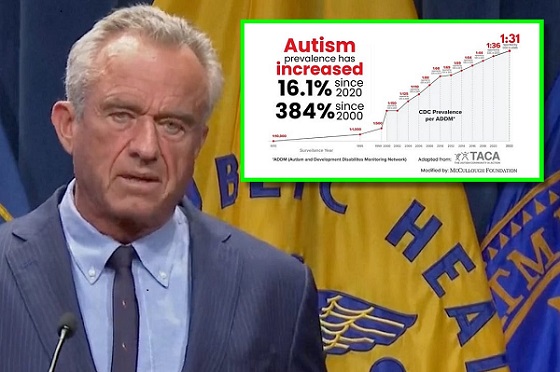Alberta
Edmonton medical cannabis company expanding to Denmark
 From Atlas Biotechnologies Inc.
From Atlas Biotechnologies Inc.
Atlas Biotechnologies announces a major expansion into the European market.
Atlas Biotechnologies Inc. is pleased to announce its expansion into Europe with Atlas Growers Denmark. Atlas Biotechnologies is proud to be the first Canadian grower to execute a large-scale indoor medicinal cannabis production facility in Europe.
Sheldon Croome, Atlas President & CEO notes: “We have been seeking to expand our production base outside of Canada for some time and are pleased to have secured this high-impact opportunity. The rapidly emerging European medical cannabis market is primed for tremendous growth and our Denmark expansion will provide Atlas a solid foundation to further serve our ever-growing client base of European buyers. We are excited to be planning one of the largest, most sophisticated indoor cultivation and GMP processing facilities in Europe, the next major frontier for medical cannabis legalization.”
Atlas Growers Denmark is structured using a finance lease of the assets of Egehøj Champignon; Atlas retains the right to purchase the assets at a fixed price at any time for twenty years. The assets consist of a 170,000 sq. ft. facility located on Funen, Denmark and will serve as Atlas’ European base of operations for the development and production of medical cannabis-based products. The property features 36 individual climate-controlled rooms, allowing for in-house cultivation of pharmaceutical grade cannabis flowers, as well as production of pure, extracted medical inputs, & GMP manufacturing of down-stream finished goods. The microclimates can be tailored to the unique environmental demands of each specific medical cannabis cultivar, or plant variety.
Kent Stenvang, CEO and Owner of Egehøj Champignon will lead the Atlas team as Denmark Head of Operations.
Kent Stenvang added: “I am thrilled to become an integral member of the Atlas team and am consistently impressed by their biotech and pharmaceutical research focus in medical cannabis. This cultivation and processing expansion is a boost for the area by creating 50 local jobs with over 100 hires expected by late 2020.”

Drawings of European Facility
Working with Novo Nordisk Engineering, Atlas has engineered a new 20,000 sq. ft. processing laboratory, which will meet European Union Good Manufacturing Practices (EU GMP) standards, the certification necessary for pharmaceutical manufacturing.
Atlas Denmark has submitted a cultivation license. Approval is pending and is expected in the next few months with planting to begin soon after. The first harvest is scheduled for early 2020 with an expected eventual product yield of 20,000 kg each year.
About Atlas Biotechnologies Inc. (“Atlas”) and Atlas Growers Ltd.
Atlas is based in Edmonton, Alberta, Canada and its wholly owned subsidiary, Atlas Growers Ltd. is federally licensed for cultivation and processing of cannabis products, with a focus on medical use markets. Atlas currently operates a purpose-built 38,000 square foot facility and laboratory, which has in-house capabilities to refine cannabis into distilled and isolated cannabinoid concentrates as well as specialized medical formulations in large volumes. Atlas’ proprietary controlled environment cultivation system is designed to maximize production of the highest consistency and quality of cannabis products for medical use applications. Atlas is heavily focused on research and development and continues to solidify collaboration with some of the world’s most prestigious post-secondary institutions, including Harvard Medical School. Atlas continues towards its vision of improving lives by creating The World’s Most Trusted Cannabis ProductsTM.
Alberta
Made in Alberta! Province makes it easier to support local products with Buy Local program

Show your Alberta side. Buy Local. |
When the going gets tough, Albertans stick together. That’s why Alberta’s government is launching a new campaign to benefit hard-working Albertans.
Global uncertainty is threatening the livelihoods of hard-working Alberta farmers, ranchers, processors and their families. The ‘Buy Local’ campaign, recently launched by Alberta’s government, encourages consumers to eat, drink and buy local to show our unified support for the province’s agriculture and food industry.
The government’s ‘Buy Local’ campaign encourages consumers to buy products from Alberta’s hard-working farmers, ranchers and food processors that produce safe, nutritious food for Albertans, Canadians and the world.
“It’s time to let these hard-working Albertans know we have their back. Now, more than ever, we need to shop local and buy made-in-Alberta products. The next time you are grocery shopping or go out for dinner or a drink with your friends or family, support local to demonstrate your Alberta pride. We are pleased tariffs don’t impact the ag industry right now and will keep advocating for our ag industry.”
Alberta’s government supports consumer choice. We are providing tools to help folks easily identify Alberta- and Canadian-made foods and products. Choosing local products keeps Albertans’ hard-earned dollars in our province. Whether it is farm-fresh vegetables, potatoes, honey, craft beer, frozen food or our world-renowned beef, Alberta has an abundance of fresh foods produced right on our doorstep.
Quick facts
- This summer, Albertans can support local at more than 150 farmers’ markets across the province and meet the folks who make, bake and grow our food.
- In March 2023, the Alberta government launched the ‘Made in Alberta’ voluntary food and beverage labelling program to support local agriculture and food sectors.
- Through direct connections with processors, the program has created the momentum to continue expanding consumer awareness about the ‘Made in Alberta’ label to help shoppers quickly identify foods and beverages produced in our province.
- Made in Alberta product catalogue website
Related information
Alberta
Province to expand services provided by Alberta Sheriffs: New policing option for municipalities

Expanding municipal police service options |
Proposed amendments would help ensure Alberta’s evolving public safety needs are met while also giving municipalities more options for local policing.
As first announced with the introduction of the Public Safety Statutes Amendment Act, 2024, Alberta’s government is considering creating a new independent agency police service to assume the police-like duties currently performed by Alberta Sheriffs. If passed, Bill 49 would lay additional groundwork for the new police service.
Proposed amendments to the Police Act recognize the unique challenges faced by different communities and seek to empower local governments to adopt strategies that effectively respond to their specific safety concerns, enhancing overall public safety across the province.
If passed, Bill 49 would specify that the new agency would be a Crown corporation with an independent board of directors to oversee its day-to-day operations. The new agency would be operationally independent from the government, consistent with all police services in Alberta. Unlike the Alberta Sheriffs, officers in the new police service would be directly employed by the police service rather than by the government.
“With this bill, we are taking the necessary steps to address the unique public safety concerns in communities across Alberta. As we work towards creating an independent agency police service, we are providing an essential component of Alberta’s police framework for years to come. Our aim is for the new agency is to ensure that Albertans are safe in their communities and receive the best possible service when they need it most.”
Additional amendments would allow municipalities to select the new agency as their local police service once it becomes fully operational and the necessary standards, capacity and frameworks are in place. Alberta’s government is committed to ensuring the new agency works collaboratively with all police services to meet the province’s evolving public safety needs and improve law enforcement response times, particularly in rural communities. While the RCMP would remain the official provincial police service, municipalities would have a new option for their local policing needs.
Once established, the agency would strengthen Alberta’s existing policing model and complement the province’s current police services, which include the RCMP, Indigenous police services and municipal police. It would help fill gaps and ensure law enforcement resources are deployed efficiently across the province.
Related information
-

 2025 Federal Election1 day ago
2025 Federal Election1 day agoBureau Exclusive: Chinese Election Interference Network Tied to Senate Breach Investigation
-

 2025 Federal Election16 hours ago
2025 Federal Election16 hours agoTucker Carlson Interviews Maxime Bernier: Trump’s Tariffs, Mass Immigration, and the Oncoming Canadian Revolution
-

 2025 Federal Election15 hours ago
2025 Federal Election15 hours agoCanada drops retaliatory tariffs on automakers, pauses other tariffs
-

 espionage8 hours ago
espionage8 hours agoEx-NYPD Cop Jailed in Beijing’s Transnational Repatriation Plot, Canada Remains Soft Target
-

 Autism1 day ago
Autism1 day agoRFK Jr. Exposes a Chilling New Autism Reality
-

 2025 Federal Election1 day ago
2025 Federal Election1 day agoNeil Young + Carney / Freedom Bros
-

 Business15 hours ago
Business15 hours agoDOGE Is Ending The ‘Eternal Life’ Of Government
-

 2025 Federal Election1 day ago
2025 Federal Election1 day agoRCMP Whistleblowers Accuse Members of Mark Carney’s Inner Circle of Security Breaches and Surveillance










